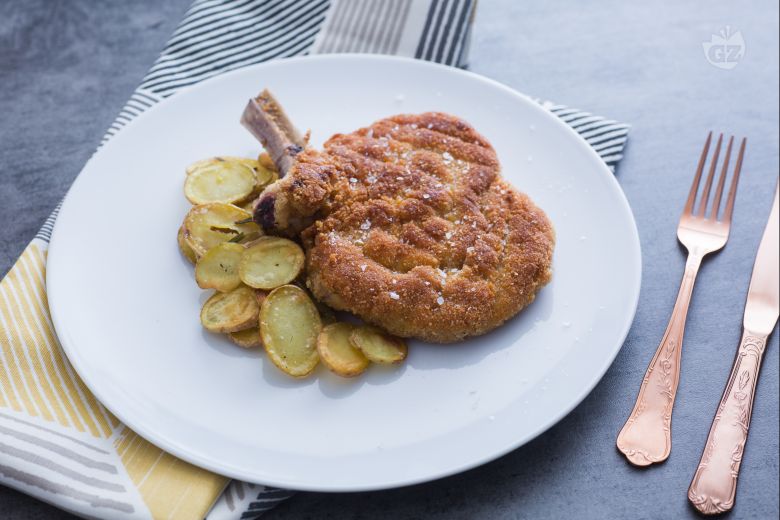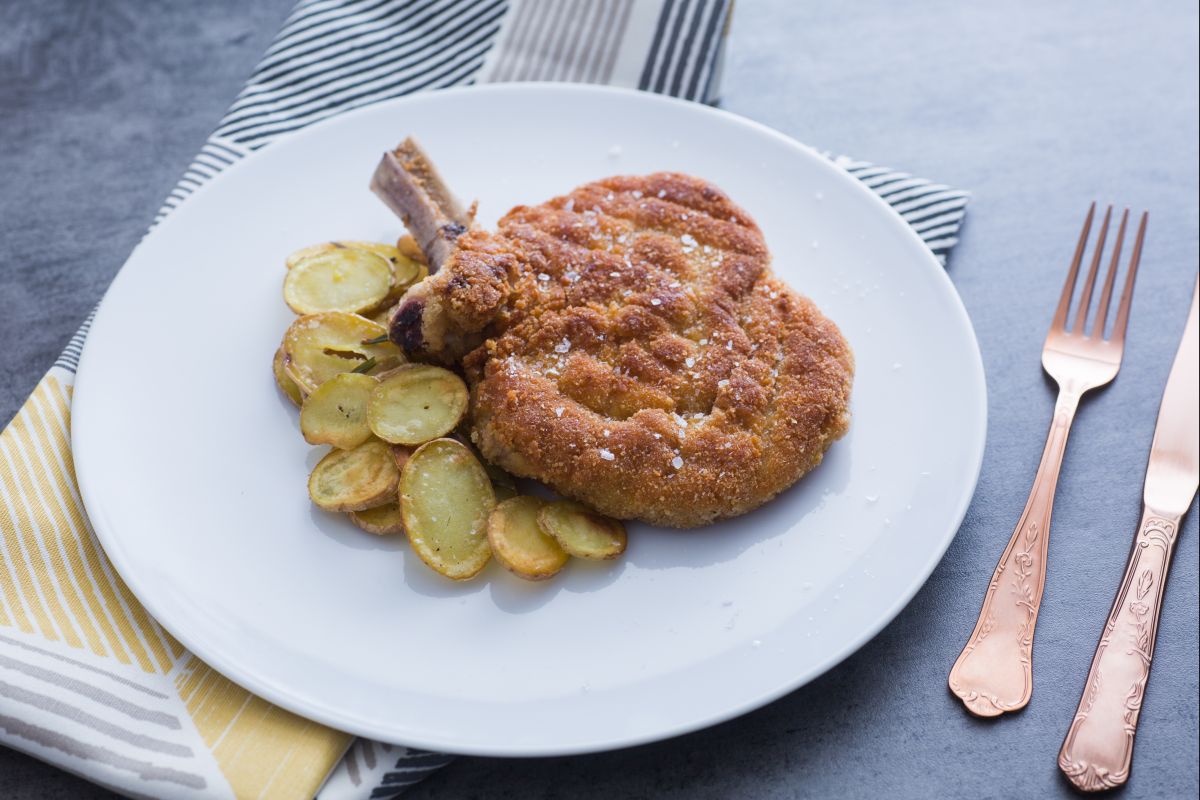Baked Cutlets
- 55 min


Golden color and crispy outside draw everyone to Veal Milanese on the dinner table—always looks so appealing and gets even pickier eaters asking for more. The breaded veal cutlets in this classic Milanese style dish offer a mix families absolutely love: a DELICIOUS parmesan coating on the outside with a tender inside that feels extra special yet still really down-to-earth. Since Veal Milanese comes right from traditional Italian dish roots, the whole thing has that familiar comfort while still feeling a little fancy for family dinners or celebrations. Slicing into these crispy breaded veal cutlets…it’s a little soft, really moist, and the crumb stays flaky just the way everyone likes—definitely a crowd-pleaser any night of the week. Smaller kids and grown-ups both agree: the pretty, golden look and nice taste work great at weekend gatherings, but honestly, even a quick weekday meal gets more smiles with this on plates. Families often put it out with a bright arugula salad or side of rich tomato pasta, and it never fails to feel like something nice and homey that brings people together.
Busy families often add Veal Milanese to their rotation since it checks so many boxes: reliable, pretty on the table, and always DELICIOUS for all ages. This breaded veal cutlet dish isn’t locked into just one meal plan—it feels right on a big serving tray at parties or as something easier on random weeknights when everyone’s hungry. Home cooks like the freedom to top the cotoletta alla milanese with mozzarella, tomatoes, or even just a squeeze of lemon (kids usually stick with plain, but grown-ups get creative). That classic Milanese style coating is so great—it handles all sorts of side dishes, from mashed potatoes to simple pasta or that go-to arugula salad every Italian veal recipe fan seems to favor. Even a nice veal chop works for bigger occasions, making this traditional Italian dish pretty flexible for serving a bigger group or casual dinner. The blend of flavor, texture, and simple family-friendly style makes this Veal Milanese a forever favorite that always feels welcoming at home, no matter how you serve it up.
You might also like:

To prepare Veal Milanese (Breaded veal cutlet), first of all, cut the veal loin into cutlets. To do this, cut the meat by inserting the knife between the bones 1 to make 4 cutlets of about half a pound (250 g) each 2. At this point scratch the bone with the tip of a knife 3 to clean the skin off completely. Otherwise the bone handle would darken during cooking and not become lighter thanks to the hot butter.

Still using the knife, cut off part of the bone for quicker cooking time 4. Using a meat pounder, beat the the slice of meat slightly, so that the thickness is evened out but without reducing it 5. Use a knife again to remove the extra connective tissue 6, which would make the cutlet shrink during cooking.

Set aside the meat and prepare the eggs. Break them into a bowl 7 and mix them slightly with a whip 8, without breaking them up too much. If they're small, add another one. Put the breadcrumbs into a large bowl. Take the cutlets by the bone and first dip them in the breadcrumbs 9,

then dip them in the eggs 10 and again in the breadcrumbs, pressing well with your hands so that the breadcrumbs stick better 11. Make a double breading by dipping the cutlets again in the eggs 12

and again in breadcrumbs, pressing well but without flattening the meat too much 13. Repeat this operation for all the cutlets, then using the flat side of the blade of a knife, tap the slices to even out and set the breadcrumbs 14. Finally, with the dull edge of the blade, make a sort of grid on the ribs by first pressing horizontal lines 15

and then vertical 16. Repeat the same for all the others 17 and start preparing the potatoes. Wash the potatoes with a little water and baking soda 18, then dry them.

Then get your vegetable slicer and a bowl full of water. Make slices about 1/10" (2-3 mm) thick 19 and gradually transfer them into the bowl filled with water 20; this way they will release some starch but will not oxidize. Put some water in a pan, salt it and bring it to a boil. Then drain the potatoes and pour them into the water 21.

Blanch them for about 90 seconds a half minutes then drain them again and cool them slightly under cold water jet 22. This precooking will reduce the cooking time in butter. Dry the potatoes with a dish towel 23 and in the meantime heat a large saucepan. Add the clarified butter 24 and let it melt.

Then add a lightly crushed poached clove of garlic to the potatoes 25, a sprig of rosemary 26 and let it all brown over a high flame, stirring occasionally. In the meantime, take another larger pan, which will be used to cook your cutlet and melt the butter 27.

As soon as it is hot but not too hot, place the cutlets, making sure that the part with the lines is in contact with the pan 28. After about 4 minutes, the cutlets will be well browned, then turn them 29 and with a spoon collect some cooking fat and sprinkle it on the rib bone 30; this way there will be no bloody streaks and you will get a clear bone. Cutlets will have to cook for about another 4 minutes, this time depends on the thickness of the cut and you will want a pinkish meat inside.

Potatoes will have the same cooking time; when they are cooked, you can salt them and season them with a little pepper 31. Drain the potatoes on a sheet of absorbent paper 32, remove the garlic and blot them with another sheet to remove the excess fat 33, even if it is very little due to the type of potatoes chosen.

When cutlets are ready, using a pair of tongs, transfer them to a plate with absorbent paper and again with a sheet of paper gently dab 34, to eliminate the excess fat. At this point everything is ready, all you have left to do is put them on a plate. Place the potatoes on the side of the plate, near the cutlet and season with maldon salt 35. Serve your Milanese cutlet hot 36.